Trees contribute mightily to a landscape's value, so it's important to keep them healthy. Here's how to deal with 10 of the most common tree diseases.
Top 10 Tree Diseases (And What to Do About Them)
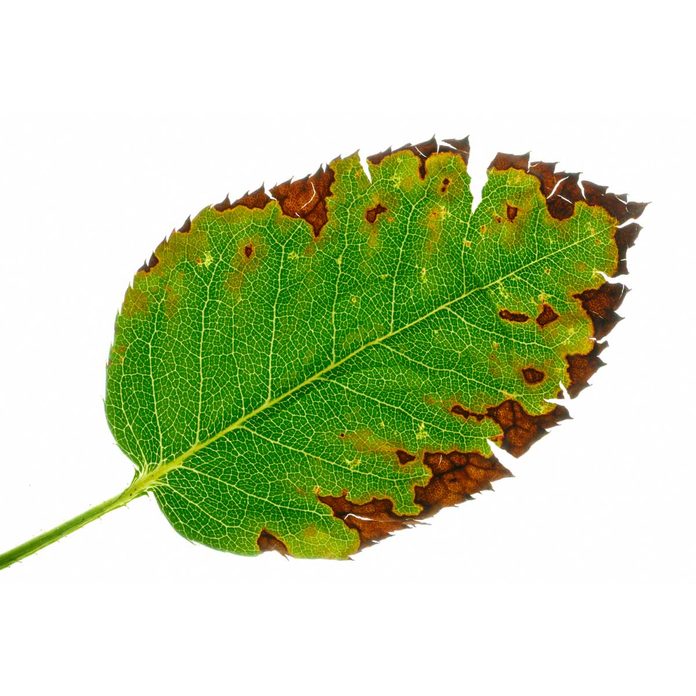
Anthracnose
Anthracnose is a common disease among deciduous trees, especially sycamore, ash and oak. It also affects shrubs such as privet. It causes unsightly dark, sunken lesions on leaves, stems, flowers and fruits.
Anthracnose fungi need water to spread and infect, so the disease is more prevalent during wet, cold springs. Because it’s more of a cosmetic issue than a serious tree health threat, anthracnose doesn’t normally require treatment. Some cultural practices can help prevent it, including collecting and disposing of leaves and twigs, as well as increasing air circulation by pruning infected twigs and branches when the tree is dormant. Caring for your trees will help them grow quickly and fill out your yard.
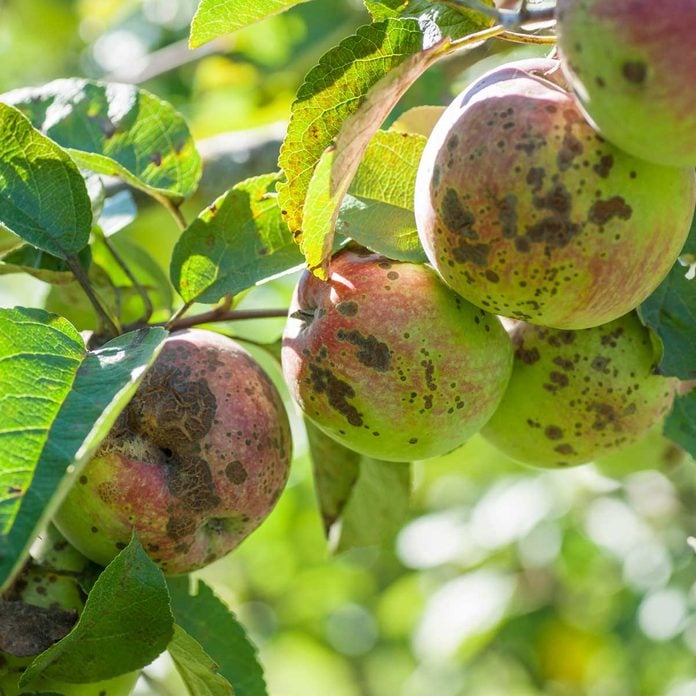
Apple Scab
Apple scab is a common disease of apple and crab apple trees, as well as mountain ash and pear. It’s caused by a fungus that infects leaves and fruit, leaving the latter unsuitable for eating. Leaf spots are olive green at first, later turning dark brown to black. Infected fruit turns color in a similar fashion, ending up brown, corky and deformed.
It’s best to plant a variety that is resistant to apple scab. Check with your local cooperative extension office for scab-resistant apple varieties suited to your climate. You can help minimize apple scab in future years by raking and disposing of leaves before winter. Fungicides won’t work on infected trees but can prevent apple scab on healthy trees. Timing is key.
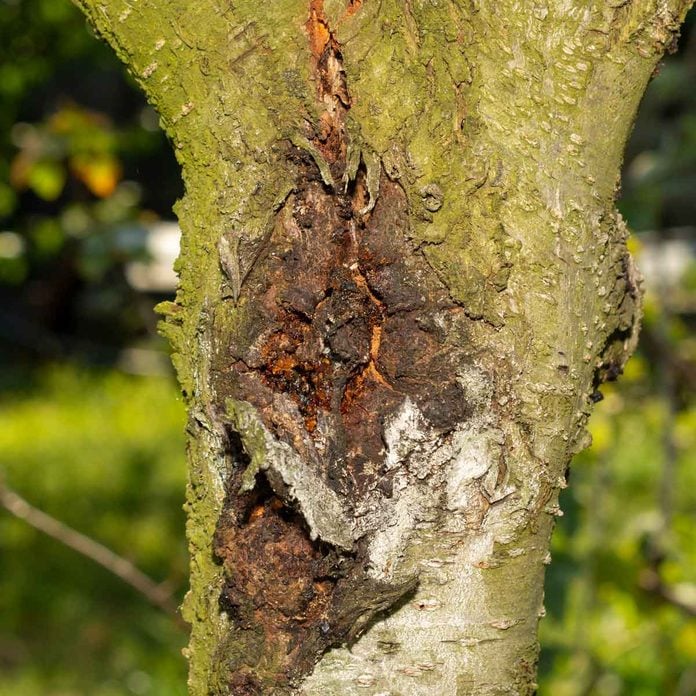
Canker Diseases
A variety of canker diseases affect trees, including Cytospora canker on pine, poplars, spruce and willows. Canker diseases result when a fungal or bacterial pathogen enters bark or sapwood through a wound. Eventually the tree’s vascular system becomes blocked and nutrients cannot flow. Depending on where the canker is, this blockage can cause branches to die. If it’s wrapped around the trunk, the entire tree may die.
Trees that are stressed — from environmental factors, animal browsing, mechanical injury, etc. — are most susceptible. Preventive measures include growing trees suited to the available space and conditions, avoiding injury to bark, proper maintenance and winter protection, and removing any branches affected by canker. Sterilize pruning tools between cuts with a 10 percent bleach solution.
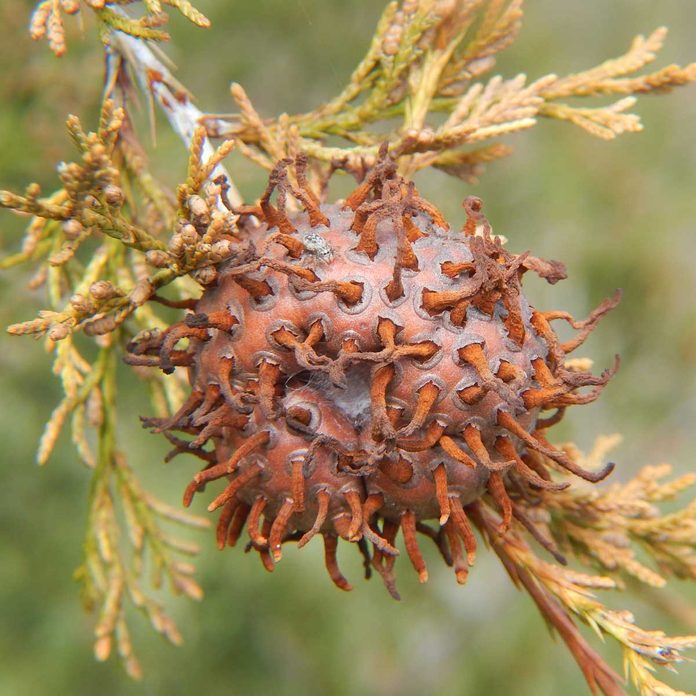
Cedar-Apple Rust
As the name implies, cedar-apple rust is a fungus that requires two hosts to complete its life cycle: cedar (Juniperus spp.) and apple and crab apple (Malus spp.). A related fungus, cedar-hawthorn rust, infects hawthorn trees.
The fungus spends its first year on the cedar. The following spring, spores are carried by wind and infect the second host, usually located within several hundred feet but sometimes up to a mile away.
The disease causes bright yellow-orange spots on leaves and fruit, and swollen fruiting bodies on stunted twigs. Leaves and fruit may drop prematurely. One cultural control is to plant a variety with resistance to cedar-apple rust (check with your local cooperative extension for recommendations). Or spray a fungicide in spring before symptoms develop. Several applications are needed.
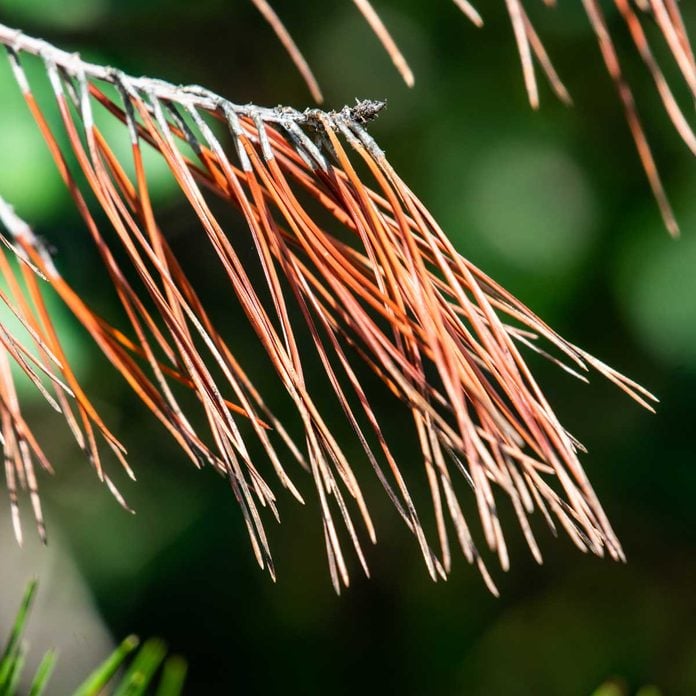
Diplodia Tip Blight
Blight can affect many different tree species, but this disease is common on stressed conifers, particularly Austrian pine. New growth is stunted, turns yellow and then brown, eventually dying. Trees under stress are more prone to diplodia tip blight, so keep them mulched and watered, especially during dry periods. Remove and destroy infected cones and tips, as well as dead or dying branches, disinfecting pruning tools between cuts with rubbing alcohol or a 10 percent bleach solution. Fungicides are applied three times in spring: when buds first break, when new shoots (called candles) are half emerged and again when they are fully developed.
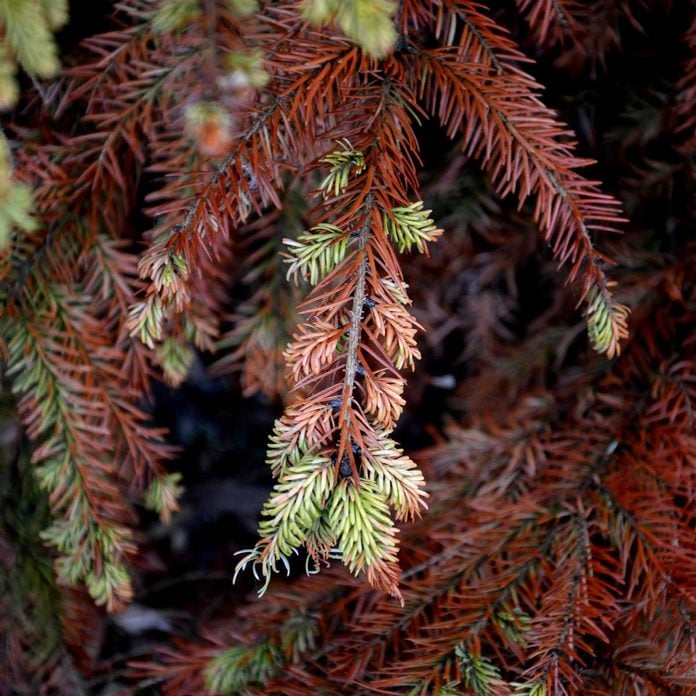
Dothistroma Needle Blight
This blight causes pine needles to turn brown at the tips. Slowly, the entire needle turns brown and falls off. Dothistroma needle blight can be fatal and is most common with Austrian pine and Ponderosa pine. Preventive measures include ensuring good air circulation by avoiding crowding, as well as mulching trees and watering them at the base to avoid wetting foliage. A fungicide can also be used.
Evergreens are great for privacy. Meet some other plants that have the same knack.
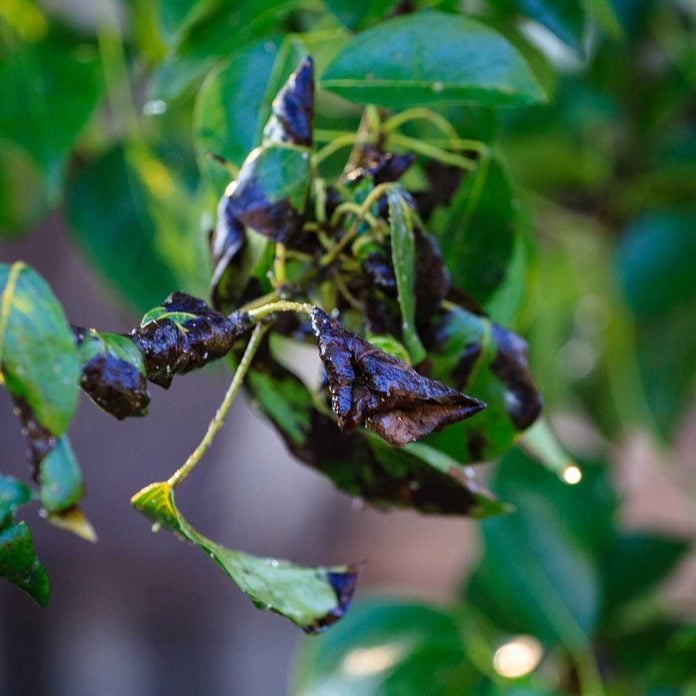
Fire Blight
Fire blight leaves a tell-tale calling card: tree branches that look like they’ve been scorched by fire, and wilting leaves that turn black. Fire blight infects twigs sporadically, so you may see dead foliage on different areas of the plant. It’s most active in warm, moist weather. To control fire blight, remove and destroy infected branches, making sure to cut all the way back to uninfected wood. Disinfect pruning tools between cuts in a 10 percent bleach solution. Fruit trees are a prime victim of fire blight, but there are steps you can take to keep your fruit trees healthy.
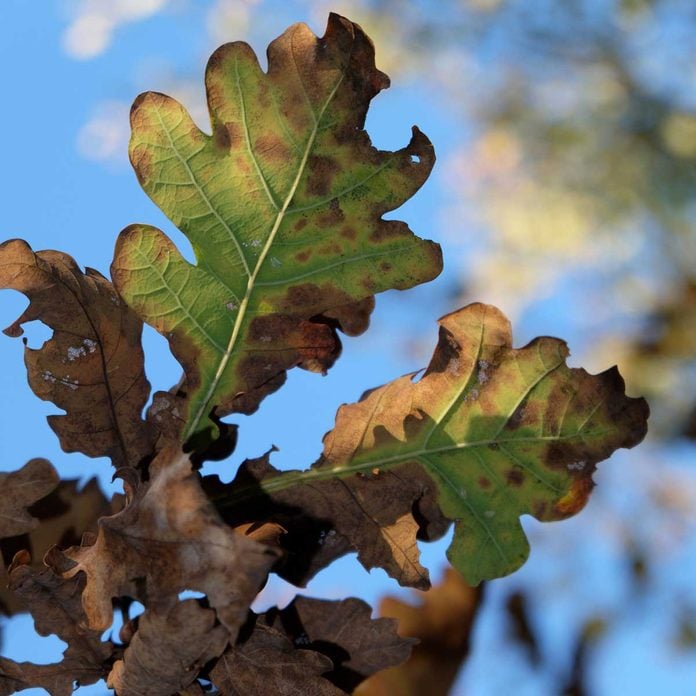
Oak Wilt
Oak wilt is a fungal disease specific to oak trees. It is fatal to species in the red oak group (pointy leaf lobes), while those in the white oak family (rounded leaf lobes) are less susceptible. Starting at the top of the tree, leaves rapidly wilt and turn brown. Oak wilt is passed from tree to tree through the roots of one oak tree to another, or by sap-sucking beetles who are attracted to freshly cut wood. Avoid pruning oak trees during the growing season. If you must prune an oak during the growing season, use a tree wound sealant to make the wound less attractive to beetles. Properly caring for your oak trees will ensure spectacular fall foliage.
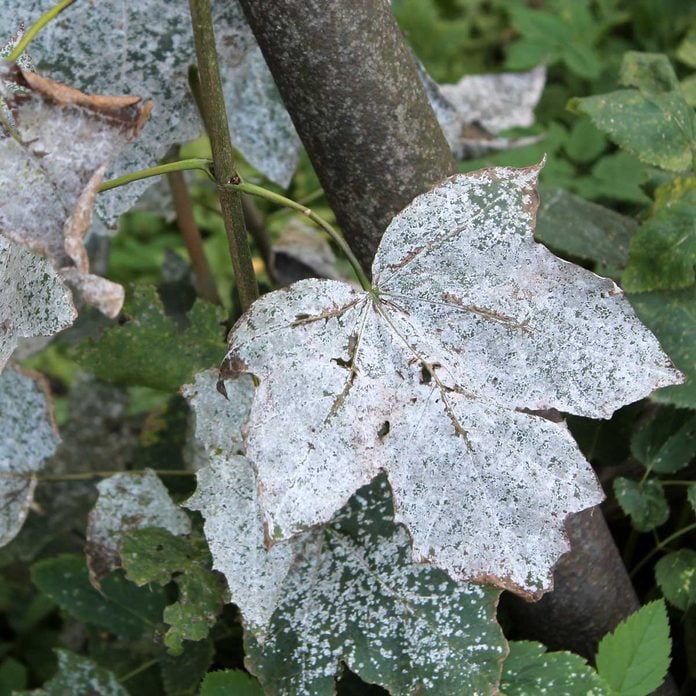
Powdery Mildew
Powdery mildew is easy to spot due to the powdery white coating covering foliage. Eventually leaves become distorted, turn yellow and drop prematurely. Caused by a fungus, it is most often found on plants in shady areas, particularly when there’s a lot of humidity but no rain.
To control, avoid planting susceptible plants such as crape myrtle and lilac; choose resistant varieties instead. Give existing plants good air circulation as well. Plants can also be treated with a fungicide.
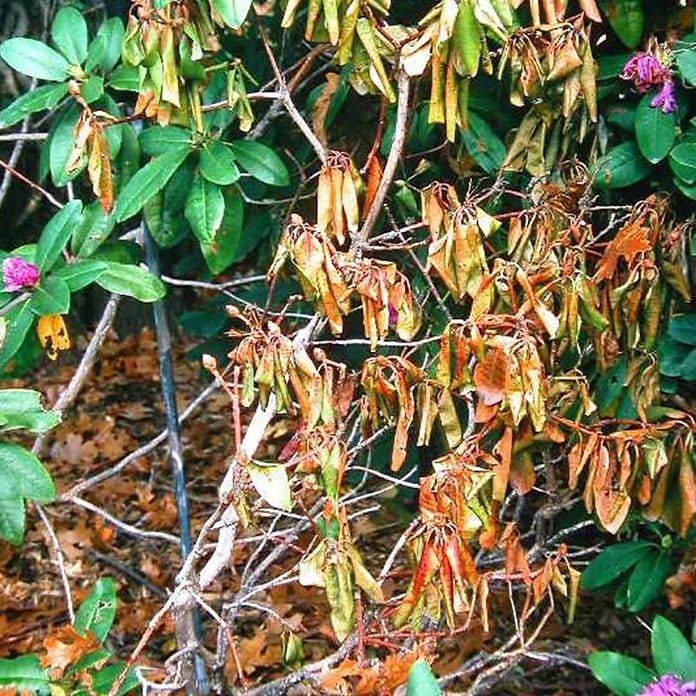
Phytophthora Root Rot
Phytophthora root rot is a fungal disease that attacks trees growing on poorly drained sites. Trees look as if they are drought-stressed, with wilting leaves turning pale green or yellow. Although there are no treatments for root rot, there are things you can do to prevent it. Avoid planting trees in wet areas or near downspouts. Or plant water-loving species instead, including bald cypress, willow, sycamore and black gum. Never plant trees deeper than they grew at the nursery — at the same level or slightly higher is preferable — and avoid piling soil against the trunk.